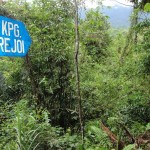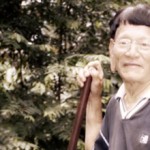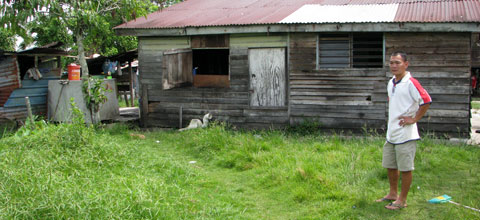The full 30 minute version of Sarawak Gone – The Bidayuh and the Dam. The Bidayuh, one of more than 40 sub-ethnic groups in Sarawak, face threats to their livelihood, traditional lands and culture with the development of the controversial Bengoh Dam.
Tag Archives: Penan
Series completed, but it ain’t over yet
 There’s a kind of anti-climax when one gets to the end of a project, but not this one. Despite completing the last official episode of this series, it’s far from over.
There’s a kind of anti-climax when one gets to the end of a project, but not this one. Despite completing the last official episode of this series, it’s far from over.
As I write The Headman is gradually populating personal walls on Facebook, various blogs and websites in a bid to keep the issues it raises not only in public view, but that we remember the legacy left by Kelesau Naan who disappeared this week, three years ago.
Kelesau was known to have described the Penan as “mushrooms of the forest”. This statement resonates with a deep and profound knowledge of the connectedness of all things. As mushrooms grow from spore beneath the surface of the soil, so too do humans grow, feed and thrive from the forest floor to the canopies that protect them.
I learnt a great deal during my brief stay in Long Kerong. The Penan take nothing for-granted. Their needs are simple by our standards, but their way of life is immeasurably rich. For those that have seen life beyond the forest, they say this world robs them of their independence and way of life. That’s not to say they’re entirely against development. It wouldn’t take much to improve their standard of living. Solar power for lighting and refrigeration, improved and frequent access to health services and teachers that aren’t afraid to venture into and live amongst these people in the forests. But remove the Penan from the forest, both the people and tong tana, the closest term the Penan have for forest, will suffer.
Ethnocide
What we are witnessing with the removal of indigenous peoples from their customary lands is ethnocide. The anthropologist David Maybury-Lewis describes this as “the destruction of a people’s way of life” and notes that it’s considered acceptable and “appropriate” policy by the Malaysian government.
It takes only a single generation for entire communities to be denuded of their traditional knowledge, customs and way of life. I’ve seen it. In 20 years of work in Sarawak, supporting the efforts of my colleagues there, travelling to far flung communities and seeing the despair in the faces of elderly Dayaks, the loss to them and us is immeasurable.
Since 1999, when I started shooting there, over 20% of the remaining 25% of native rainforests I’d flown over, driven through or traced on maps has been torn out, leaving the forest to the scourge of palm oil where nothing but rats and snake survive. The rattan, forest foods and medicines, impossible to comprehend volume of species, both flora and fauna, and as ethnobotanist Wade Davis laments, a unique vision of life is being lost forever.
The prognosis may be dire, but I can only hope and persist in my work and support that of my colleagues, that it may not be as tragic as it seems today.


